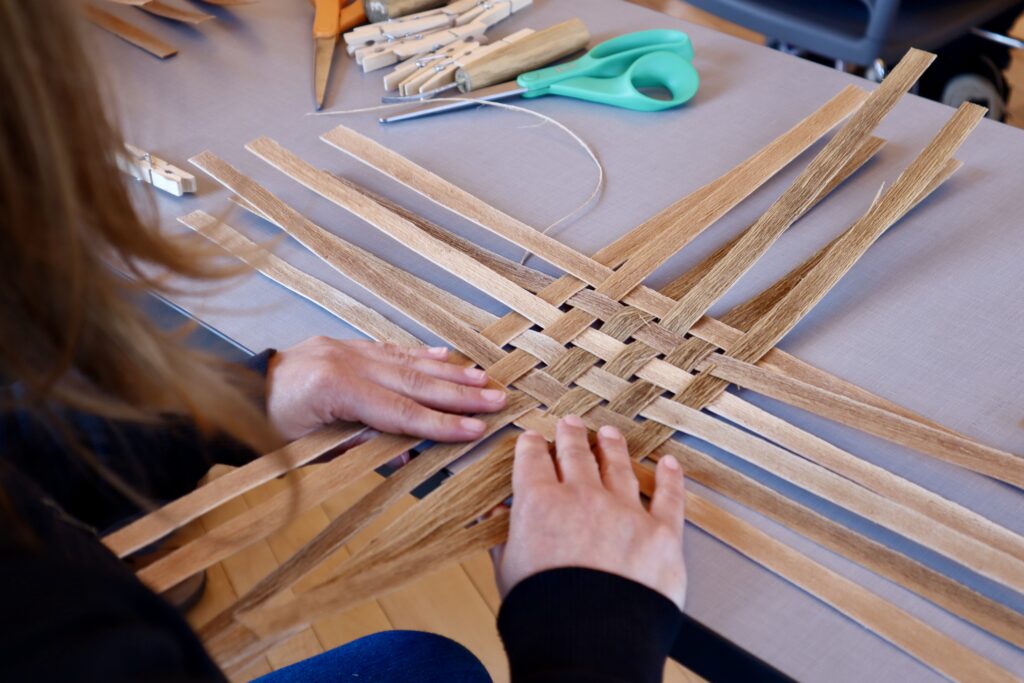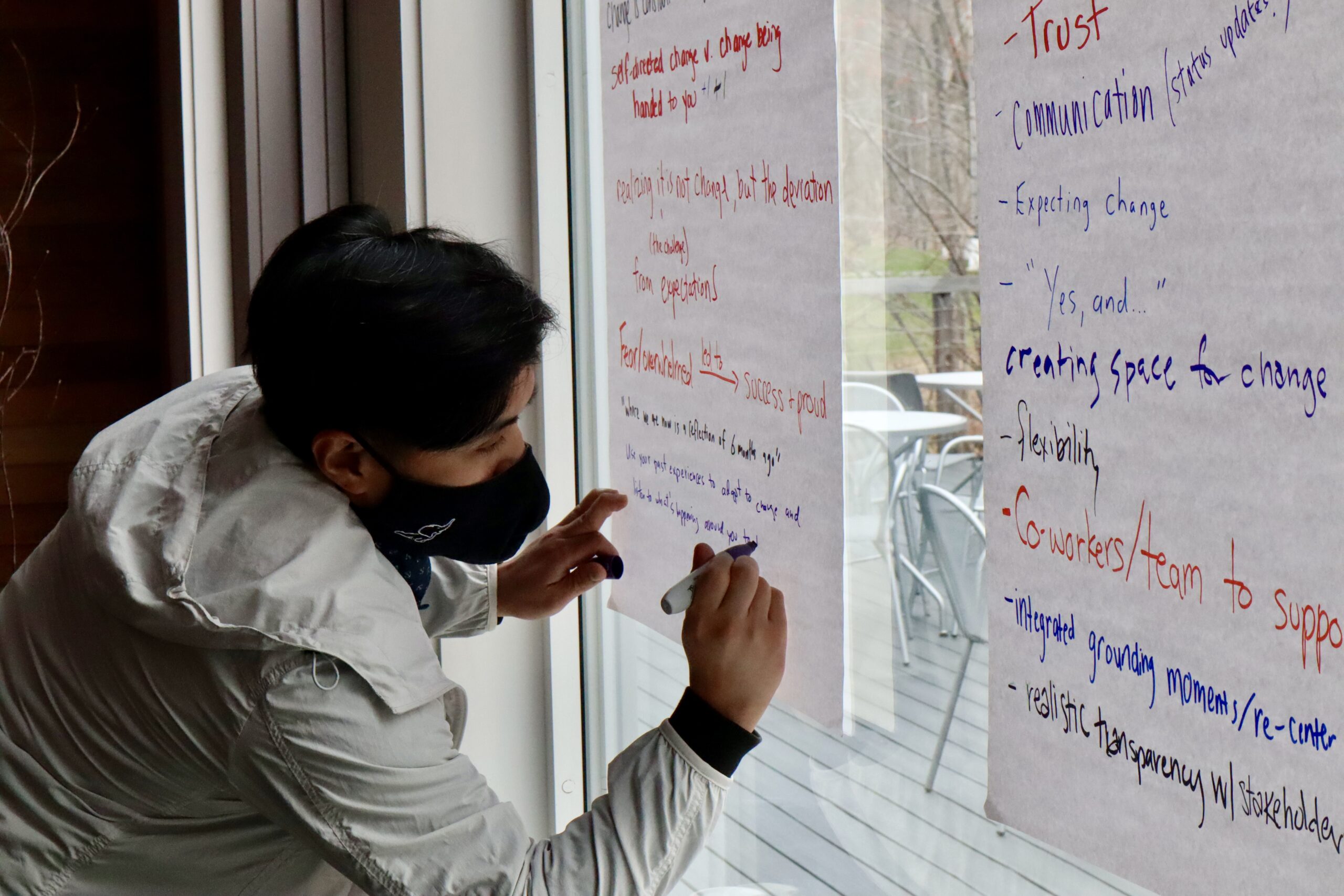We recognize creativity as vital to our programs, designs, and practices at Arts Midwest. As part of our journey to cultivate an environment that nurtures creativity instead of burnout, we switched to a four-day work week in 2022.
The four-day work week has been getting a lot of well-deserved attention lately. Recent reports are showing that the majority of the companies that took part in the world’s largest four-day work week trial have decided to keep it permanently.
Based on our experience at Arts Midwest, this headline isn’t surprising. We believe the four-day work week is a powerful way to encourage productivity and overall well-being.
But, our journey to the four-day work week wasn’t always easy. It took several tries and careful implementation to figure out the right fit for our organization. Here’s what we learned along the way.
How To Implement a Four-Day Work Week At Your Organization
Want more information about how to implement a four-day-work week at your organization? Check out this Ideas Hub article for a detailed roadmap about how to make this change successful.

Lessons, Learned and Unlearned
1: Change (No Matter How Exciting) Takes Careful Planning
Our story begins in 2019, when we went through our first executive leadership transition at Arts Midwest. We experienced higher than average staff turnover during this period, which was followed by an accelerated move to remote work in 2020 due to the pandemic. Staff members were dealing with hefty new additions to their workloads as they pivoted in-person programs to virtual and supported relief and recovery efforts.
By November 2021, burnout among our team members was palpable. Continuous uncertainty, coupled with a high-stress environment, prompted us to consider alternative approaches to supporting work-life harmony across our organization. This was when the idea of a four-day work week surfaced.
At the conclusion of a major Arts Midwest virtual event that required extra effort from our entire staff, our leadership team announced that we would be trying a four-day work week for the next six weeks.
But rollout wasn’t as smooth as we had hoped, and the feedback we received surprised us. We ran into seemingly endless logistical challenges due to pre-set deadlines. And our staff were concerned about having compressed meeting schedules and a lack of time for focus. As a result, many staff members continued working Fridays during this trial.
Overall, six weeks was not long enough to adjust and change fatigue diminished any benefits. At the end of the trial, we quietly returned to a five-day work week.
Though this initial trial was disappointing, it highlighted the need for a more thoughtful and collaborative approach to implementing a four-day work at Arts Midwest.
2: If At First You Don’t Succeed, Try, Try Again
In 2022, we developed a Strategy Frame to guide our next 10 years. Simultaneously, we developed a Theory of Change and prepared to launch a new brand and website. We sunset some of our programs and began developing new ones.
We knew we would need energy and creativity for this new era. Could a different approach to the four-day work week be successful, we wondered?
We decided to try again, with a few important changes:
- We gave ourselves a month to plan before starting the trial.
- We committed to a six-month trial to allow people to fully adjust to new ways of working.
- We were transparent about this being a big leap into the unknown.
- We committed to check in monthly on how it was going.
To gain full organizational buy-in, we convened our staff for a retreat about wellbeing, with the four-day work week as a focus. This gathering provided a platform for open conversations, allowing every team member to voice their concerns, expectations, and suggestions.
Through those discussions, we established group agreements that were essential for a smooth transition to a four-day work week. These agreements addressed how we would adjust our workplans, streamline our meetings, and navigate policy questions. We also developed plans for letting our community know about our trial. Importantly, we talked about how we would know if the four-day work week was working for us and how we would decide whether or not to continue.
If you’d like to learn more about our shared agreements, read our Ideas Hub piece, “How To Implement a Four Day Work Week At Your Organization.”
Finally, we created a roadmap for the tasks we would need to achieve together using our project management software, Asana. Everyone had access to this shared plan and understood how it fit into their individual workplans.
After the difficulty of our first trial, we realized the importance of gaining full organizational buy-in and fostering a culture of trust. With a strong strategy in place, we felt confident about trying again.
Arts Midwest Staffer“With the 4DWW, I have had a level of work-life balance and creative space that is allowing me to focus more on my personal and professional development, as well as be even more intentional in my role at Arts Midwest.”

3: Rest Leads to Creativity – and Productivity
As we embraced the four-day work week, something special happened. The extra day off each week for rest started to counteract burnout and bring more creativity and intentionality into our work. But these positive changes didn’t happen overnight.
First our staff had to get used to a new way of working. For some, there was an unwelcome sense of urgency. Others reported feeling behind in their work or like they did not have enough time for deep focus. Early on, quite a few told us they were frustrated about needing to work a bit on Fridays to catch up.
As we moved through the trial, staff also talked about how it improved their work-life balance, let them spend more time with family, gave them space for creative hobbies, and made weekends more enjoyable. Equally as important, this restful space also had a big impact on how our staff engaged meaningfully with their work.
Despite some of the concerns staff raised about managing their workloads, the results we achieved during the trial indicate that there was no loss of productivity. Arguably, it increased.
Between 2022 and 2023, we launched new programs, introduced a new brand and website, implemented new technology, and continued to invest in the professional development of our team, all without disrupting our regular activities. These results made it clear that our team could continue to meet the needs of our constituents within a four-day work week. And to our delight, many constituents told us they were interested in learning more about the four-day work week.
By the end of the trial, every staff member said they wanted the four-day work week to continue. We were thrilled that our staff survey showed that 90% of respondents felt more creative because of the four-day work week. And, our voluntary turnover rate dropped dramatically, going from 14% in FY22 to 0% in FY23.

4. This Changes Everything: Embracing the Power of Transformation
To fully unlock the benefits of the four-day work week, it’s crucial to approach this shift comprehensively and be open to adopting more effective ways of working. It is only through reflecting on the last five years of continuous change that it’s possible to see how fully we have transformed as an organization.
Arts Midwest is not what it was in 2019, when most of our staff came to work in an office in Minneapolis five days each week and relied heavily on manual processes and in-person communication. Our current team is spread out across our region. We use project management and messaging software to bring clarity and visibility to our work and shared goals. We’ve introduced technology and automations in how we operate that save time in ways we couldn’t have imagined five years ago. We have reshaped the very fabric of how we collaborate and accomplish our goals. The four-day work week has been just one part of a larger shift towards a more efficient, creative, and adaptable Arts Midwest.
None of this has been easy. It took us years to introduce and learn new systems, let alone break our old habits and ways of working. Sometimes we’ve felt change fatigue at the very mention of a new idea, and sometimes we miss our office culture of the past like an old friend. But we believe that the four-day work week has given us much-needed resilience to move through whatever changes may lie ahead.
Implementing a four-day work week is a bold move. Like any major change, it comes with its share of challenges and skeptics. Yet, we firmly believe it’s worth exploring as a means of centering employee wellbeing and fostering creativity.
We invite others to consider the transformative potential of a four-day work week. You may discover, as we have, that a well-thought-out shift can indeed change everything for the better.
Wrapping Up + Gratitude
A big shout-out also goes to other organizations that helped shape the creation of our four-day work week, such as insights from the 4DWW Global Study and National Arts Strategies.
We also want to express our sincere thanks to our stakeholders, constituents, and staff. Their support and openness to this transformative change have been crucial to its success.
For those eager to learn more about the possibilities of a four-day work week, we’ve put together a detailed roadmap in our Ideas Hub. It’s a step-by-step guide with questions to consider for organizations thinking about making this transformative shift.
If you have additional questions about Arts Midwest’s journey, have press inquiries, or are looking for someone to present on the four-day work week, please reach out to Chief Administrative Officer Emily Anderson.
